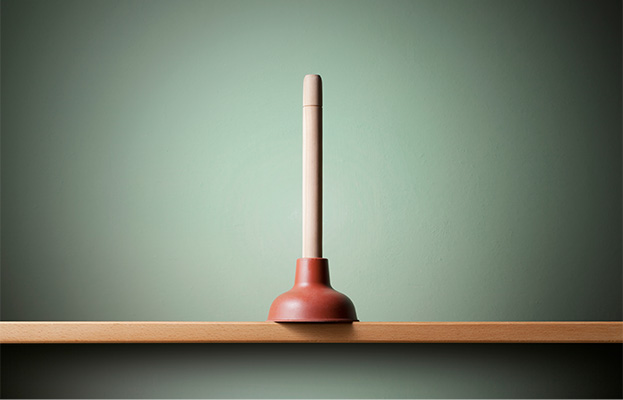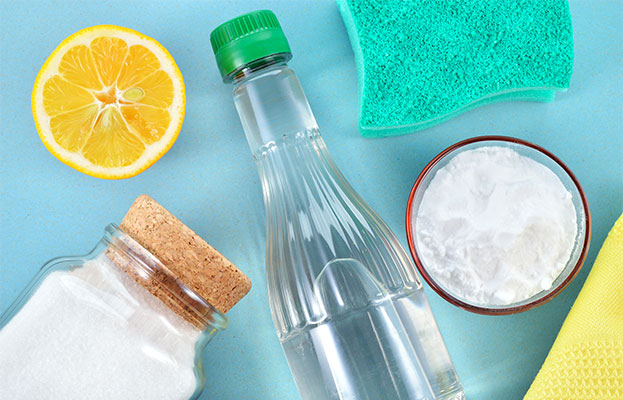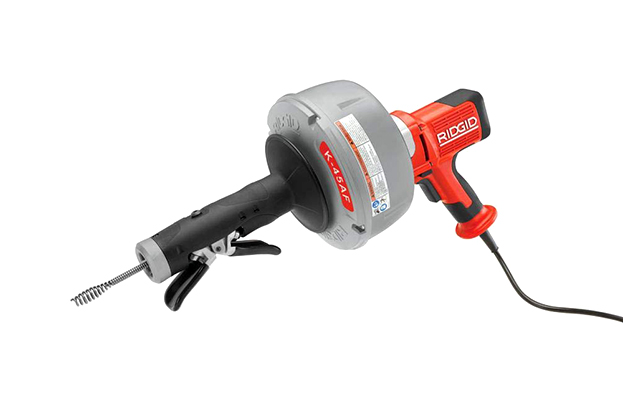1. Hot Water

A straightforward non-toxic option is to carefully clean sinks, drains and toilets with hot water. Hot water helps break down grease, soap and food and can loosen blockages. Mix with detergent to help with grease. Choose hot water rather than boiling water if you have PVC pipes and to reduce chances of scalding.
2. Plunger

Using a plunger is the easiest, cheapest way to fix clogged toilets and sinks. All it takes is adequate preparation and lots of patience to get things done. While plungers are one of the most affordable household tools, living without at least one can lead to inconvenience.
Place the cup of the plunger over the drain to create a tight seal. Then, using firm pressure, push and pull the plunger vertically. Plunge the drain for about 20 seconds. If you continue to have a slow drain, try plunging more and use extra force.
For overflow drains in sinks, you can take a wet rag, wring out the excess water, and plug up the hole. Covering the overflow drain helps create a stronger suction.
3. Liquid Drain Cleaners – The Natural Way

If you don’t like using chemicals or don’t feel safe using them, you can try homemade cleaners using baking soda and vinegar. These two are good at fixing bathtub and sink clogs.
Alternatively, you can also use hot water and dish soap in clearing clogged toilets.
Start by boiling water. Pour hot water into a bucket, add some liquid dish detergent and pour the solution into the toilet bowl. Let it stand for a few minutes to allow the hot water to soften whatever it is that clogged the pipe before flushing it again.
4. Liquid Drain Cleaners – The Chemical Way

Still can’t get your sink and toilet unclogged using plungers (or still don’t know how to use a toilet plunger) but don’t want to call the plumber yet? You can try one of those chemical drain cleaners, but understand that these substances need to be handled with care.
There are different types of chemical drain cleaners available on the market, some of which are sold to professional plumbers only. These substances are so strong, they can cause organic matters that clog toilets to disintegrate and oxidize. And because they’re heavier than water, chemical drain cleaners can pass through standing water in your clogged toilet.
5. DIY Drain Snake

If neither cleaning the trap nor plunging clears a plumbing clog, your final weapon is a drain snake.
This tool, a coiled spiral snake that’s usually about 6mm thick with a handle on one end. A drain snake works the opposite way that a plunger does:
You push the snake into the clog and crank it to drive the snake farther into the obstruction. While parts of the clog break up and flush through the drain, the snake helps you gain access to the clog so that you can pull it out. Snakes are especially handy because they’re long enough to reach clogs that are further down a drainpipe.
DIY Not working? Call Todsta Plumbing
If all else fails or you don’t feel confident in tackling the blockage by yourself, the qualified and friendly team at Todsta Plumbing would love to help you get your blocked drains running freely.
